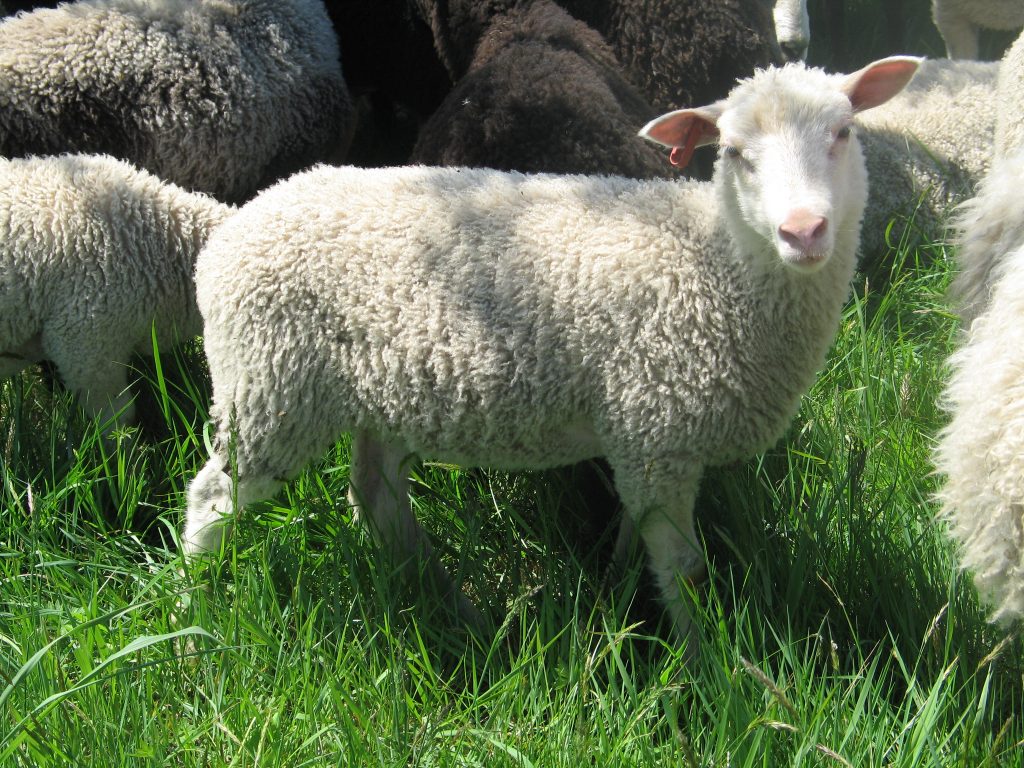
We started out with Finnsheep with the idea that despite their small stature, they would be efficient meat producers since they have multiple lambs each spring. After raising them for a few years now, we have adjusted our expectations somewhat. They are incredible mothers, but have very little muscling when compared with a meat breed, so despite large numbers of lambs, they don’t produce comparatively large amounts of meat. Another issue with the breed is that they come in wide variety; some weigh less than 100lbs, others reach 200lbs; some have long, coarse, wavy wool, others have finely crimped, soft locks; some can barely feed one lamb, others can raise 4; some have terrible structure and struggle to carry their lambs or even to walk, others are strong and solid even with a belly full of 6 lambs! This lack of uniformity makes it very difficult to sell the breed as anything with commercial viability, or even source a decent flock from multiple farms. Despite all these drawbacks, we believe there is great potential in Finnsheep, so we are working towards improvement of the breed with a focus on production, structural integrity, and health.
Temperament is an additional selection consideration for us, since we closely manage our sheep year round. If our sheep hurt themselves trying to get away when we come near, that is a problem, since we are near them constantly!
We are culling a number of our ewes this year; keeping the sheep with strong, correct structure who produce multiple lambs and the milk to feed them. We use a three-strike system to decide to stays and who goes. If an animal has a single flaw, we don’t remove them from the flock unless the flaw reduces quality of life. We don’t sell culls as registered animals, nor do we sell culls with health or structural issues – those ones go to our freezer to eliminate any chance of a dishonest buyer breeding an animal with problems. Some animals we cull since they don’t adhere to the Finnsheep breed standard, and those we may sell as unregistered animals, since some of them make great pets!
Some of our favorite ewes are pictured below. We love these ewes because they have solid, balanced structure, good width on the ground(an indication of muscling), fantastic maternal instincts, good milk production, are easier to keep in decent condition, and don’t die of parasites. They each have their flaws, as there is no perfect sheep, but the key is complementary breeding. The ram we pair with these ewes will not carry the same flaws, in order to give their offspring a chance of being an improvement on both parents!



